Last Updated on May 15, 2019 by Soumya
Temple and War may not be a very palatable combination even though it has been a staple truth in this world for ages. On our recent trip to the lesser-known temples of Cambodia, we visited a beautiful Hindu temple, predating the Angkor Wat, that had been raged by war for many years. This was the Temple of Preah Vihear which had been caught in the Cambodia-Thai ownership crossfire. It was finally in November 2013 that Preah Vihear was awarded to Cambodia by the International Court of Justice.
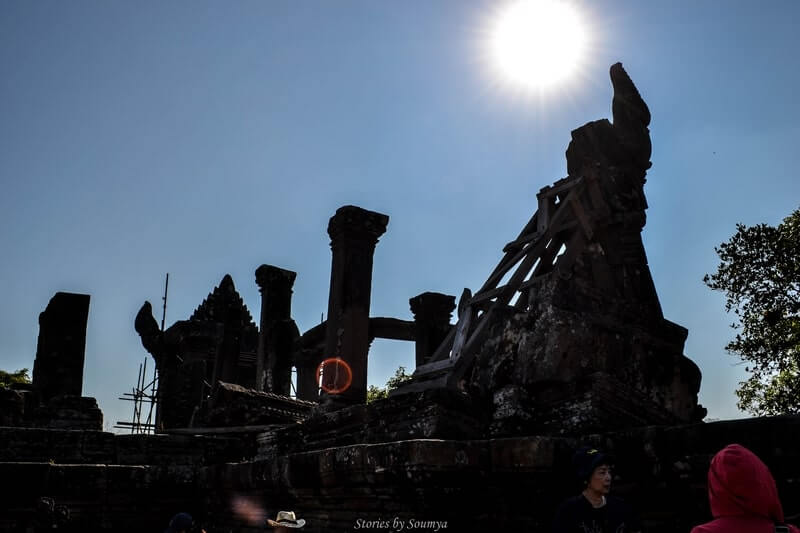
Tourism has spiked ever since. But this is minuscule in comparison to what you see at mighty Angkor. Preah Vihear is still one of the most pristine, unexplored temples of Cambodia.
Come with me as I take you through a tour of the ancient Khmer temple of Preah Vihear in Cambodia.
Preah Vihear is a Hindu temple dedicated to Lord Shiva. Construction began in the 9th century AD and most of it was built under the reigns of Khmer kings Suryavarman I and Suryavarman II. As I have discussed earlier, it was involved in a long ownership tussle between Cambodia and Thailand. Today, the sight is peaceful and is frequented by devotees and tourists alike. Let’s see why.
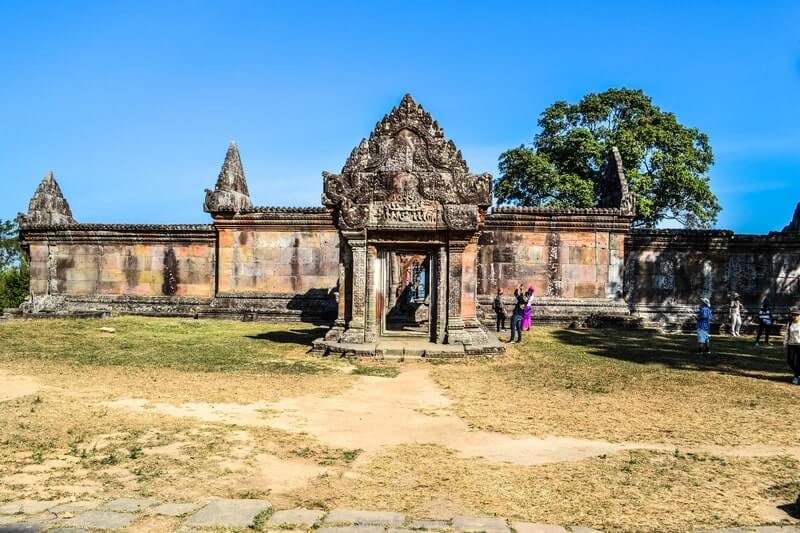
Why is the temple of Preah Vihear unique?
Preah Vihear Temple is unique both in terms of its architecture and location. Unlike other Khmer temples which have rectangular plans, Preah Vihear is constructed on a long north-south axis. Its location is also spectacular. It is perched on a steep cliff on the Dangrek mountain range on the border between Cambodia and Thailand. The temple offers scenic views of both sides of the border.
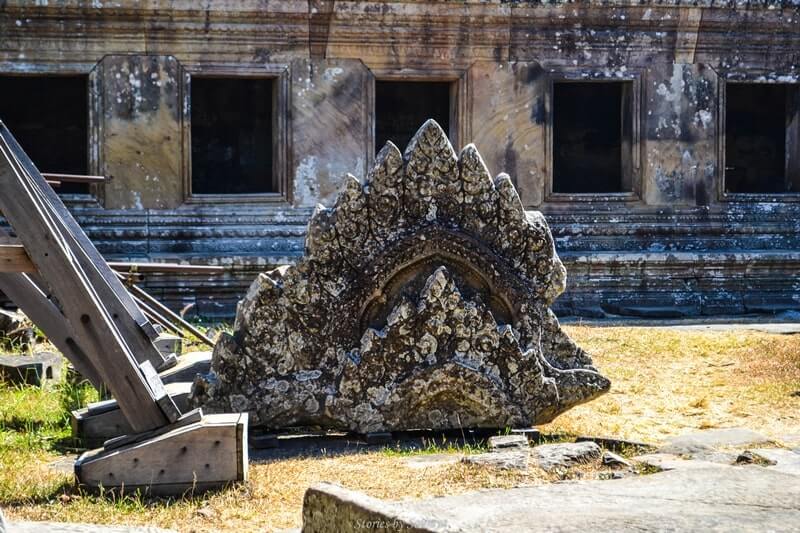
According to UNESCO, the temple of Preah Vihear is an outstanding masterpiece of Khmer architecture that exists in complete harmony with its environment. Preah Vihear temple was accorded the UNESCO World Heritage status in 2008.
Are you looking for other Khmer temples that have linear plans instead of rectangular ones? Then, don’t forget to check out our post on the temples of Koh Ker – only 2 hours away from Siem Reap.
Architecture of the temple
The temple is designed on a north-south axis with the main sanctuary being located at the highest southern end. There are four levels with four courtyards each beginning with a carved entrance building called the gopura. The sanctuary and gopuras are flush with traditional Khmer architectural designs such as corbelled hallways, blind doors, carved pediments, and colonettes on windows.
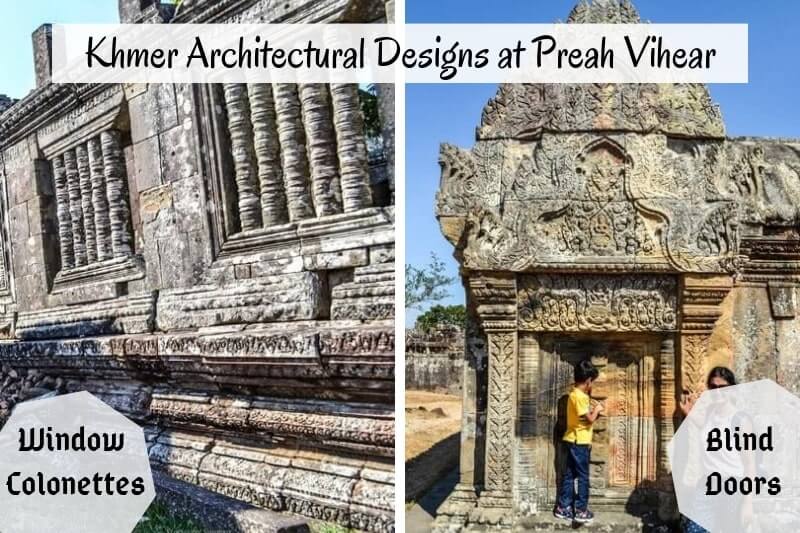
You have to walk through five gopuras in order to reach the main sanctuary. These gopuras are each stops on an 800-meter long pavement and are accessed by flight of stairs. Every gopura is at a higher level than the previous one and precludes the view of the one after it. This means you can see the next gopura and, in turn, the main shrine only after you walk through the previous one.
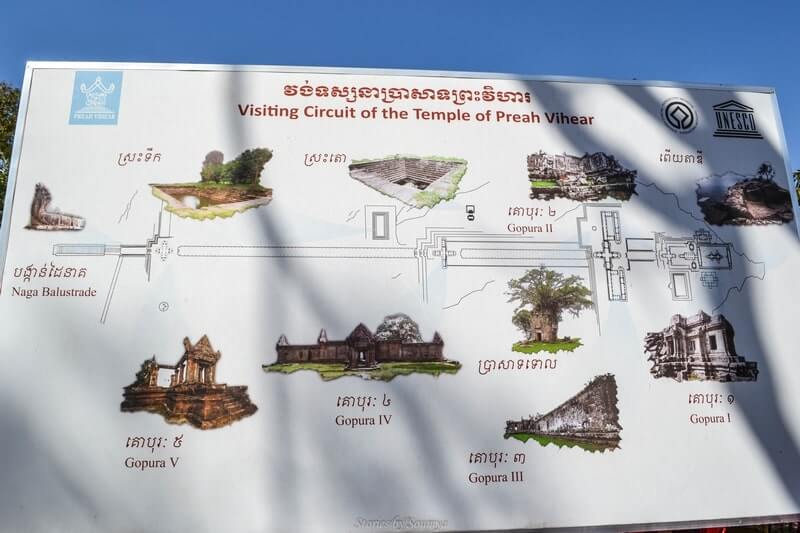
Here’s how each gopura and the main shrine look.
According to the visiting circuit of the temple provided above, visitors first arrive at Gopura V, walk through the pavement and up a flight of stairs to reach Gopura IV, and similarly to the other gopuras until you reach the main sanctuary which is within Gopura I.
Gopura V
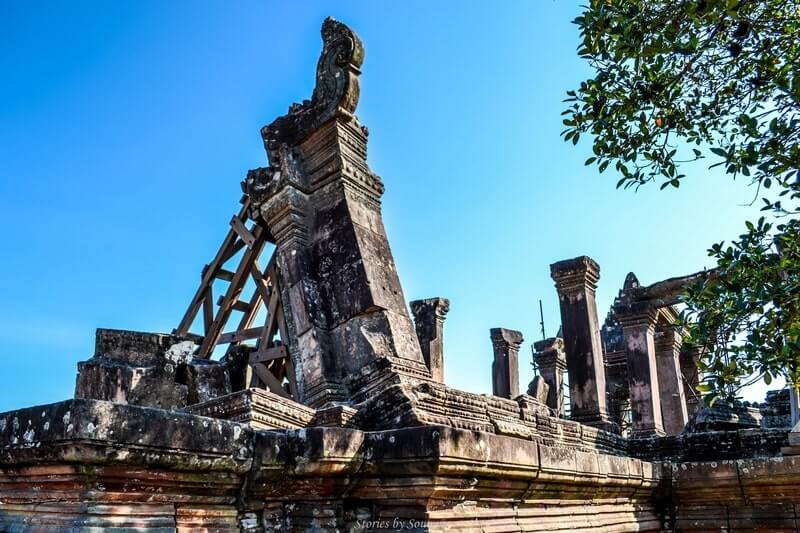
This is how the first gopura looks like. It is not adequately restored and might be a little disappointing to a first-timer. But the real beauty lies in discovering what lies ahead on the path to the main sanctuary.
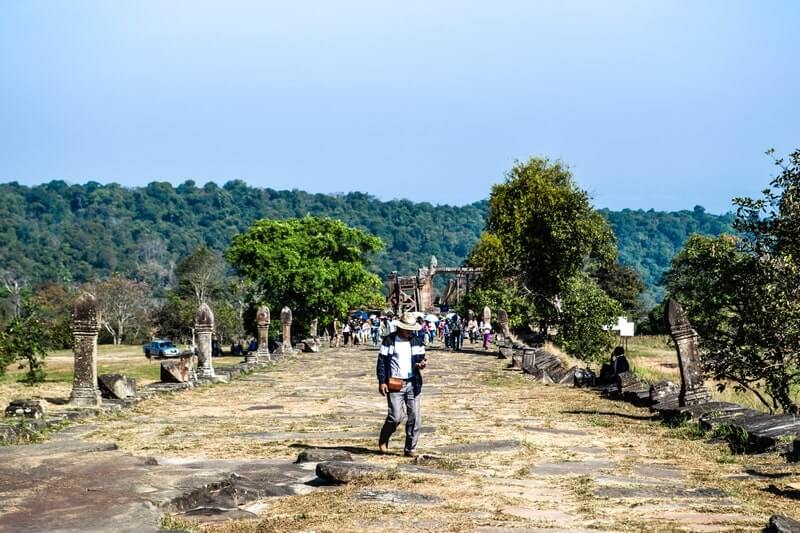
Gopura IV
The next gopura or Gopura IV can be accessed by a flight of stairs as shown below. The stairs are not very steep and you need
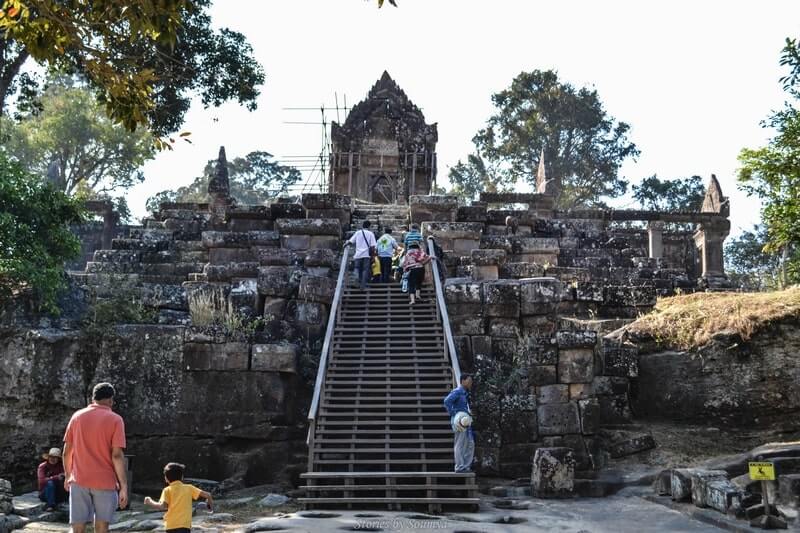
As you can see in the picture below, the main facade of the entrance is still being restored. A couple of army men may be seen patrolling around – a vague reminder of the temple’s history.
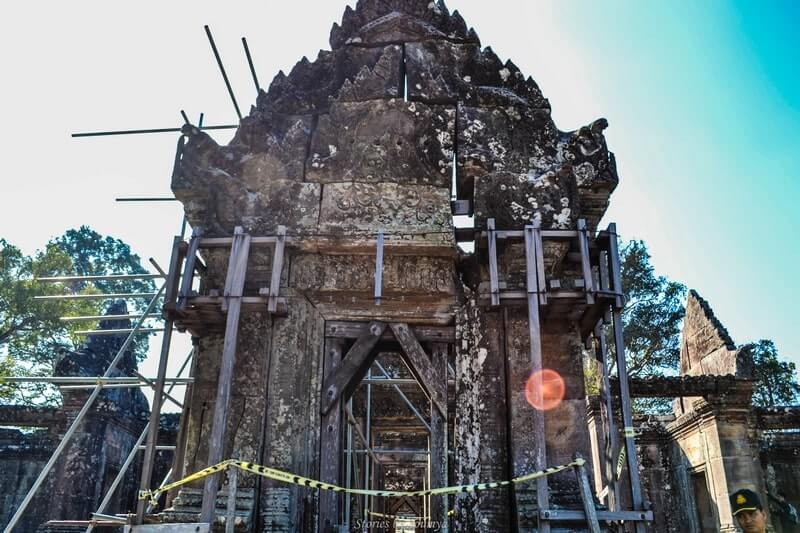
Carvings on the stone walls and friezes are intricate. Doorway pediments were carved beautifully. We will see a few more examples as we move along. Here, you can step inside the gopura in order to get transported to a different era and imagine walking alongside monks in the stone-lined hallways.
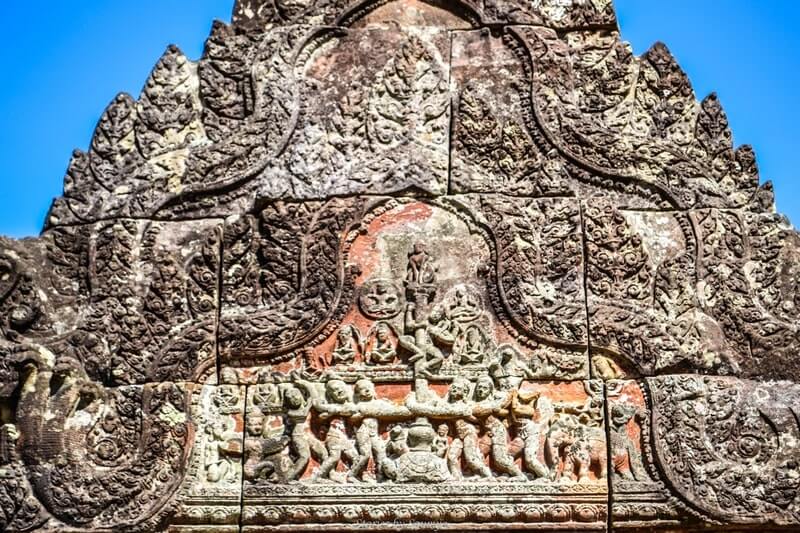
Gopura III
Gopura III is again a few meters and stairs away from the previous one. This building is more elaborate than the previous gopuras with a well-defined courtyard surrounded by extensive hallways and rooms on the side.
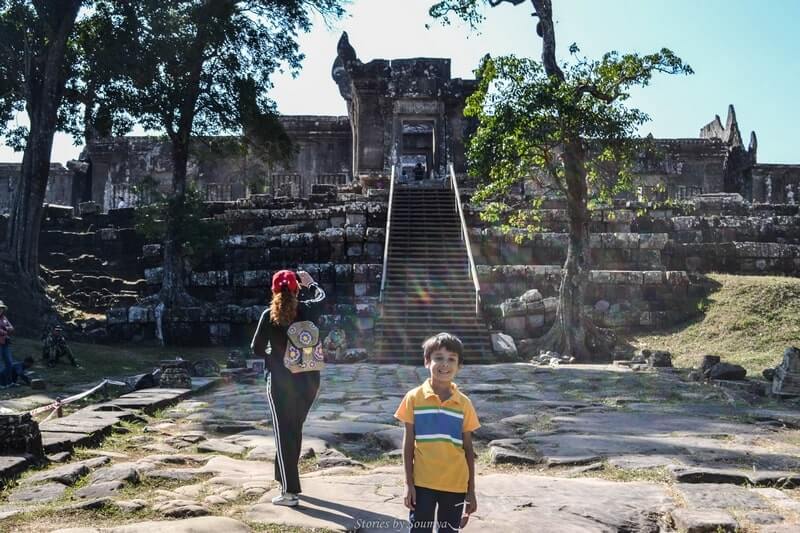
In the picture below, you can see a gallery on the eastern side of Gopura III. Notice the carved pediments and window colonettes to remind you of other more famous temples of the Angkor era.
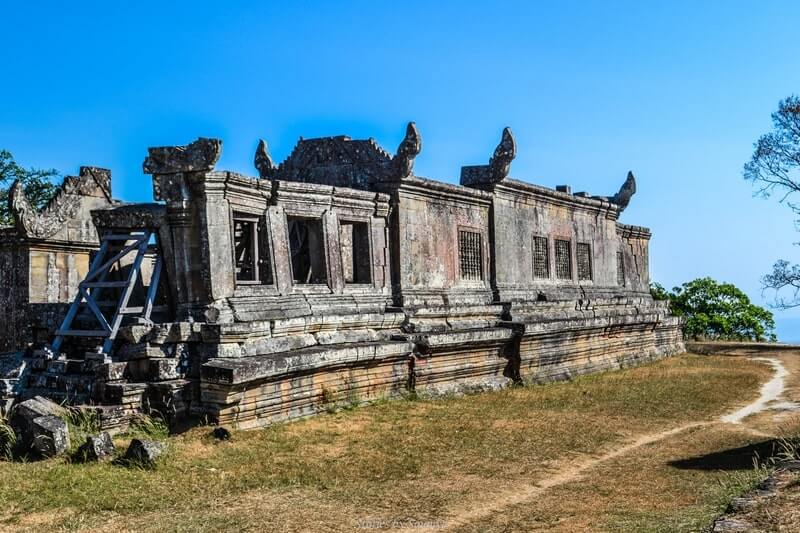
The rear of Gopura III has been restored well and is often used as a favorite photo spot by tourists. Almost all the pediments and their pieces are in the right place. Even though there are no roofs, you get the feeling of a fully-functional temple if you look at the photograph below.
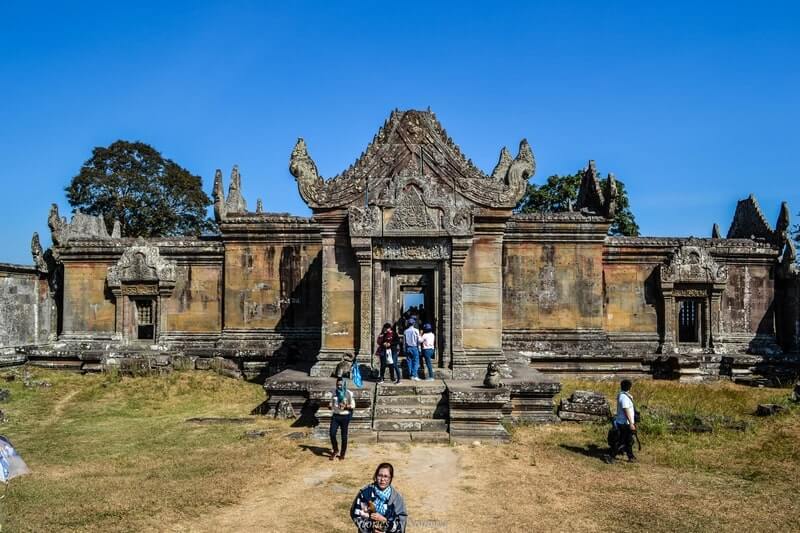
Gopura II
The main entrance into Gopura II is closed because of ongoing restoration work (picture below). Side doors are open. As you enter the gopura and walk into an enclosed courtyard, you will notice smaller shrines and galleries within.
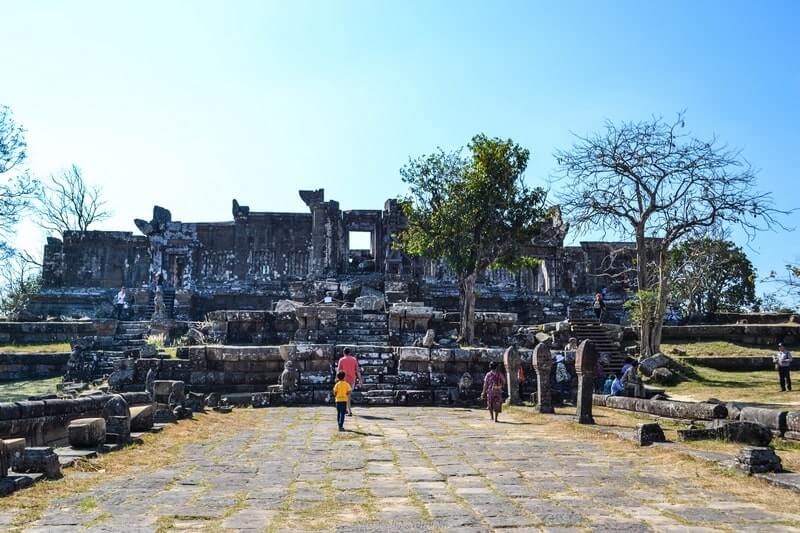
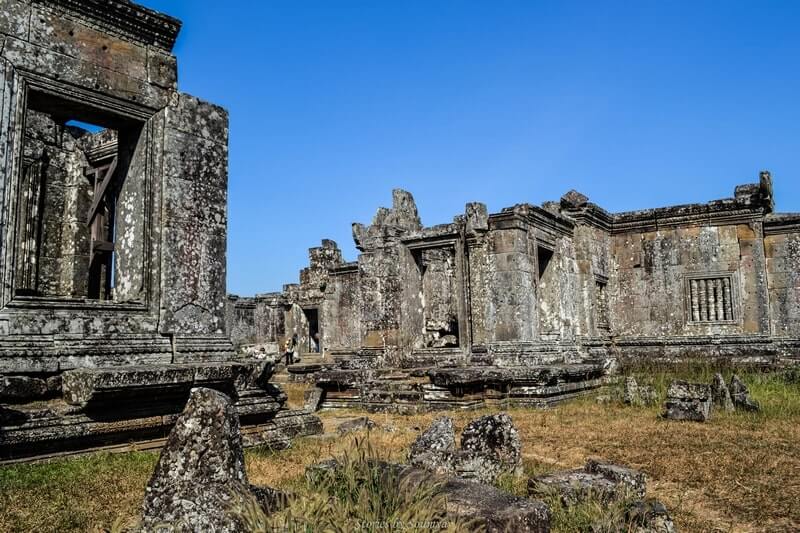
Gopura I and Main Sanctuary
At the end of Gopura II, you will enter into Gopura I and into a courtyard that houses the main sanctuary. The main shrine is located at a height and can be accessed by a flight of stairs. It is a living temple and a ceremony was in progress when we arrived here.
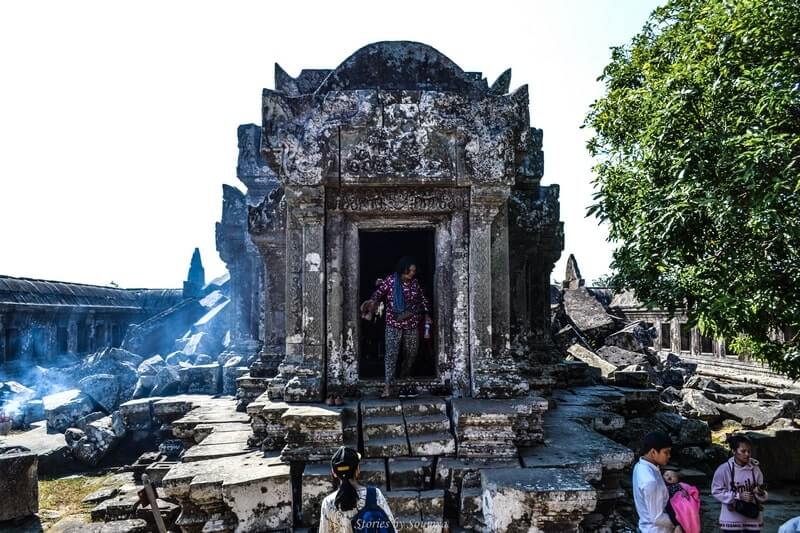
Preah Vihear is believed to be a Shiva temple. However, there is no Shiva Linga inside the shrine. We were a little surprised to see an image of Ganesh, Shiva’s son being worshiped inside.
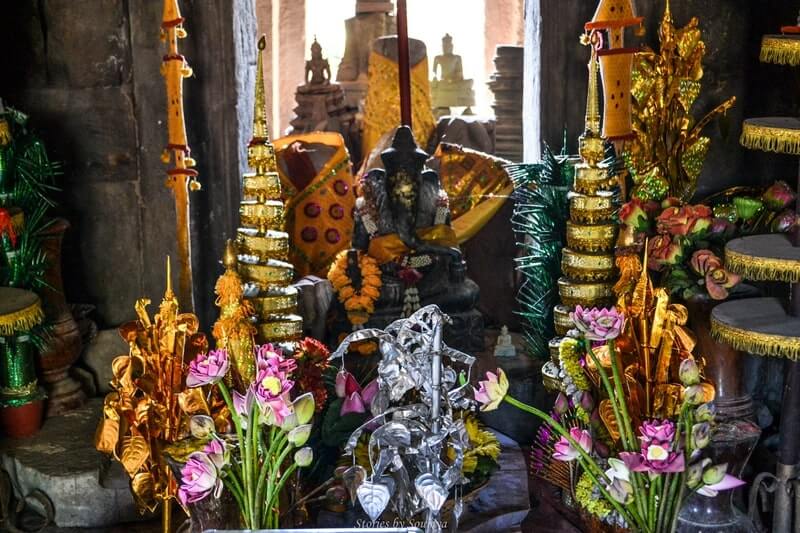
Gopura I is a continuous corbelled hallway that surrounds the sanctuary on all four sides. One side of this hallway has been fixed to enable people to walk through it.
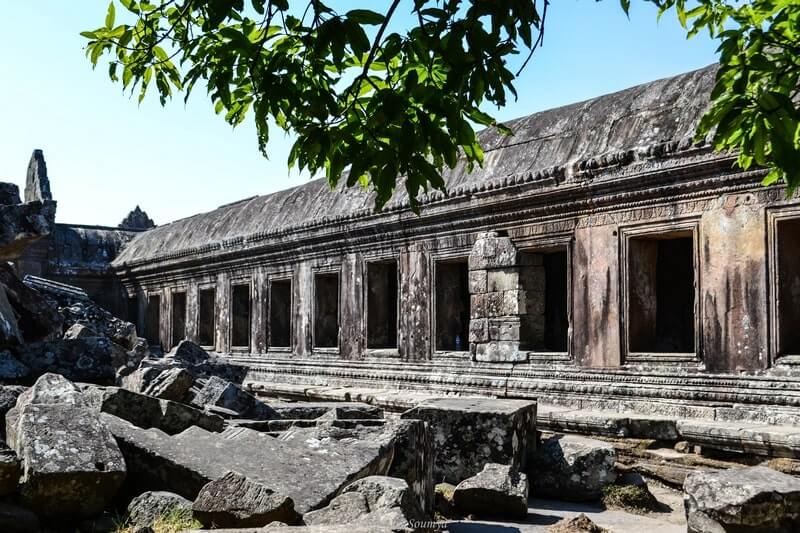
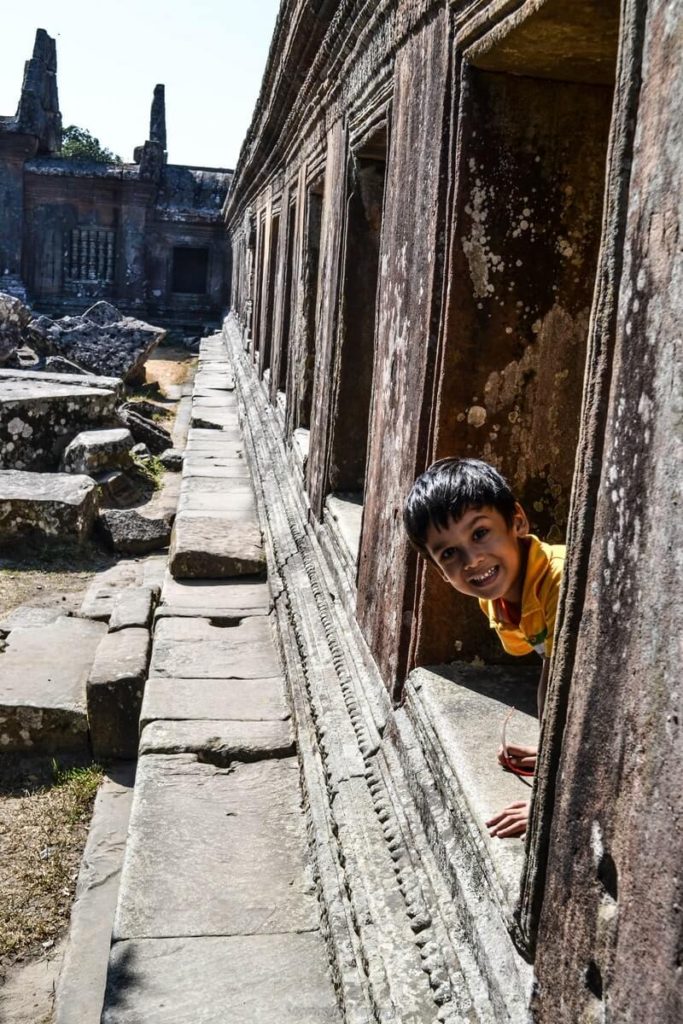
You can walk on this side of the hallway and go out of a tiny door to the top of the cliff where the temple stands. From here, we were able to get a panoramic view of the Cambodian side of the border.
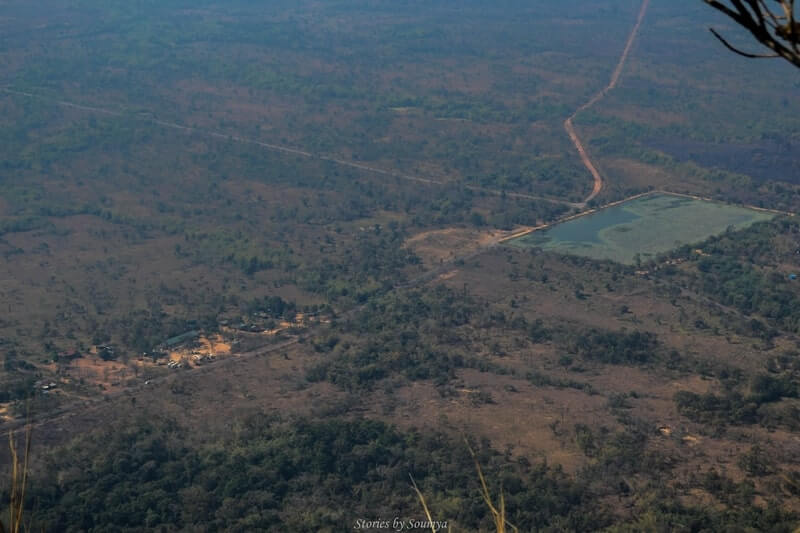
Interesting highlights about this hidden gem of Cambodia
- The temple of Preah Vihear predates the temple of Angkor Wat yet is much less visited than its more famous counterpart.
- Preah Vihear was accorded the UNESCO World Heritage status in 2008.
- The temple is located atop a sharp cliff on the Dangrek mountain range bordering Cambodia and Thailand. This is also a reason why the temple was caught in an ownership battle between the two countries for several years. The battle was finally resolved in 2013.
- Preah Vihear temple was designed differently from the other temples of the Khmer era. It is constructed on a long north-south axis unlike the usual rectangular plan of the other temples.
- Getting to the temple is exciting and involves climbing a steep cliff in a pick-up van or motorbike.
If you love ancient temples, Cambodia has plenty to offer. Read through this article on the Lost Temples of Banteay Chhmar that were looted and pillaged for years.
How to get to Preah Vihear?
Getting to the temple of Preah Vihear is as exciting as exploring the temple ruins. The temple is located more than 2000 ft above sea level which means reaching the temple requires quite some elevation gain. The last stretch of road is almost at an angle of 70 degrees. Usual cars cannot ply on this road. That is why you need to take a special pick-up truck from the ticketing and parking area. Hold on tight to the rails of the truck during the final leg of the journey.
We hired a private taxi for our 3-day tour of the lesser-known temples of Cambodia. On the second day after a quick breakfast at Sra’em, we took off to the ticketing area of Preah Vihear where we boarded our pick-up truck. The journey to Preah Vihear from Sra’em takes about 30 minutes and from Siem Reap about 4 hours.
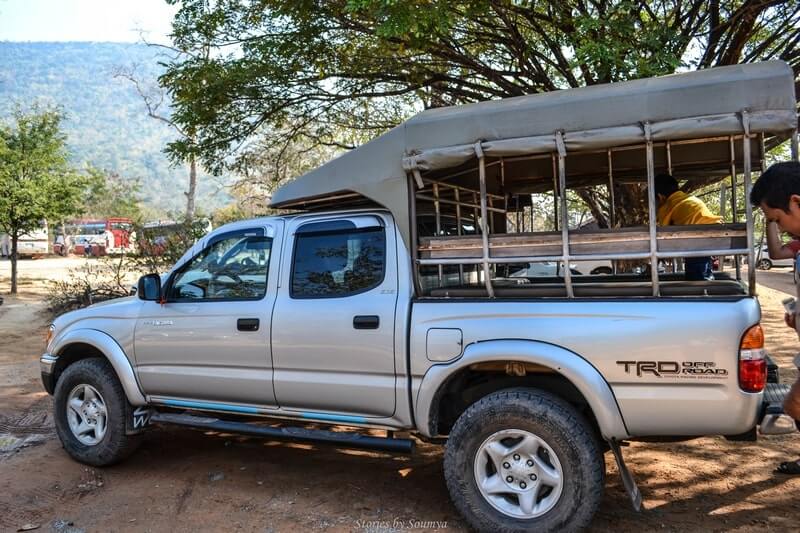
You will have to walk a bit after the pick-up truck drops you at the temple parking lot. Make sure you note the number of your truck so that there is no confusion on your way back.
We took a good deal of time exploring the temple and its carvings. Our driver was probably not used to his passengers staying so late, so he left. In case such a thing happens, you can go to the small office by the parking lot and explain your situation in English and/or hand movements. Another driver will happily drive you back for no extra charge.
Tickets & Toilets
The ticketing counter is at the foot of the mountain and this is where you park your vehicles as well. Here, you can purchase tickets to the temple at $10 each. You can also book a pick-up truck for $25 (return) or a moto-taxi for $5 (return) to take you up to the base of the temple. A pick-up truck can comfortably accommodate 6 passengers. Journey to the temple takes around 15 minutes from here.
Once you are dropped off at the temple, you will have to walk in order to explore the 5 gopuras and the main temple. You will be climbing steps and it can get pretty hot during the day. Make sure you carry sufficient water and a hat. The temple opens between 7 am – 5 pm everyday.
Toilets are available at the ticketing area and are sufficiently clean. There are a few shops here where you can buy water, coconut water, and soft drinks.
Where to stay for the night?
We stayed at the Heng Sokchamroeun guest house in the small town of Sra’em. Sra’em is the closest town to Preah Vihear and offers decent accommodation options. Heng Sokchamroeun was a cozy place with neat rooms. Water pressure can be terribly low in the bathrooms and hence, taking a shower might be a bad idea. Breakfast options are also limited here. I would suggest having your food at Sok San, another guest house right next door. They serve great omelets and delicious Khmer curries.
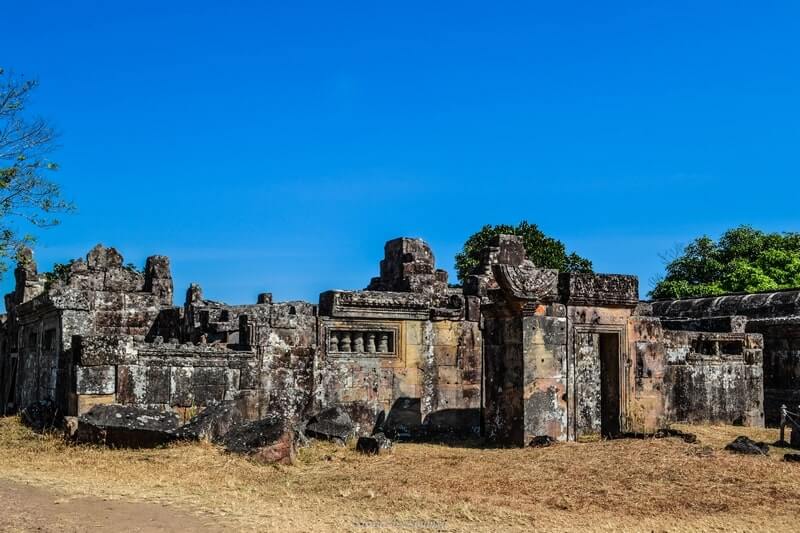
The temple of Preah Vihear is an amazing place to take a dip into Khmer history. An excellent location, a unique floorplan, and a conflicting ownership history make Preah Vihear quite the different Cambodian temple. It is one of the most off-beat destinations in the country – a true paradise for lovers of history, art & architecture, and thinner crowds!
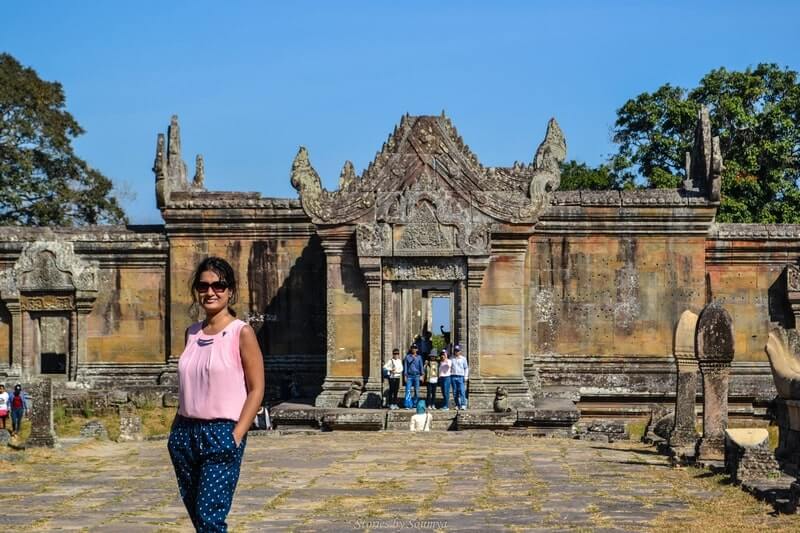
Have you visited the temple of Preah Vihear? Do you want to go here? Feel free to drop a line below and we can get the conversation going. And while you are at it, don’t forget to follow us on Facebook to get regular updates on hidden gems and lesser-known cultural destinations across the world.

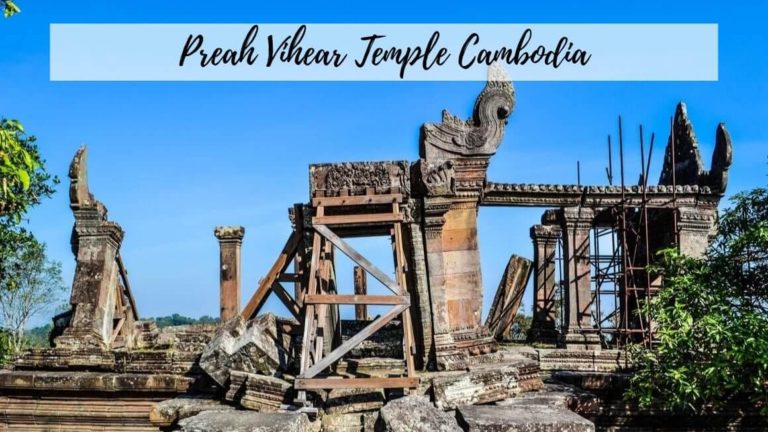
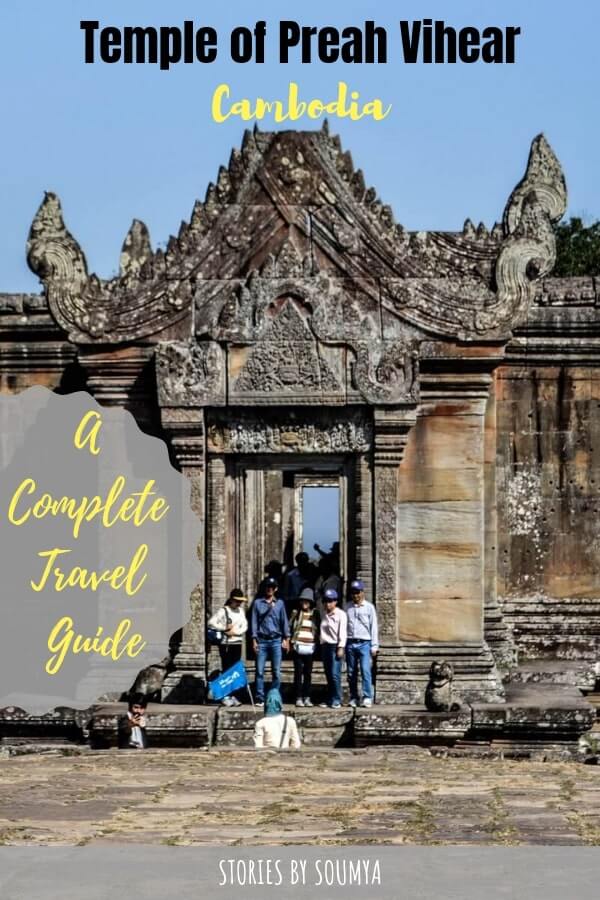
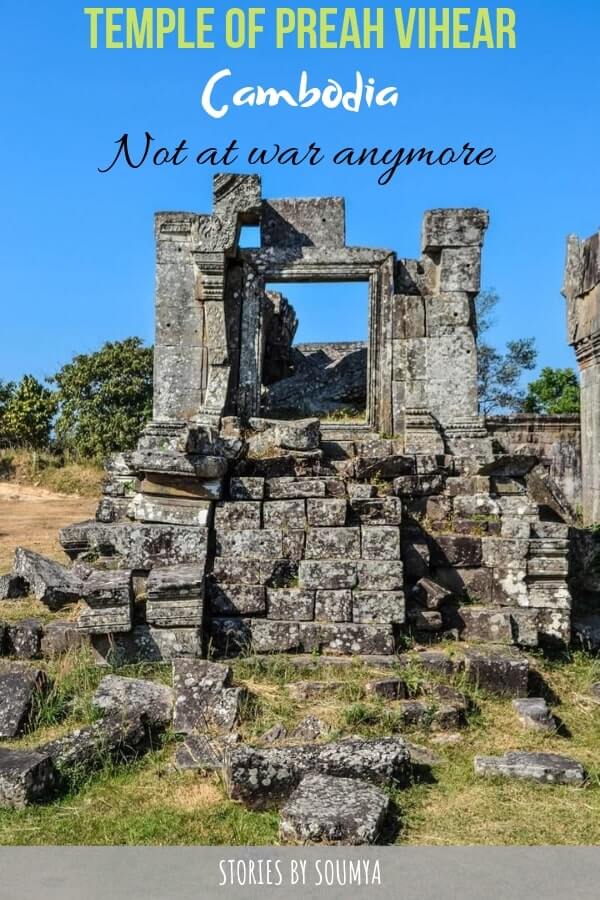
Thanks for this guide. It brought back memories of my trip to Siem Reap last year. I did not visit this temple though as I had injured my foot then
Oh I am so sorry to hear that. Hope you get to go back and see it one day. Siem Reap is magical.
I love visiting temples and exploring history but had never thought of visiting one that is being restored. I’m sure your post will cause many to visit it who would only got to Angior Wat.
Thanks Marcia. Am glad you found it useful.
So beautiful! My sister has been here a few times, and her photos are just as beautiful! Can’t wait to go one day.
So glad to hear that someone else has been here. The pictures come out wonderful. Happy travels to you too.
Amazing post! Love your pictures and all the details you have provided, this place has so much history and its good to see that its being somewhat preserved!
What a fascinating historical site- thanks for sharing, I learned a lot from this post!!!!
You’re most welcome.
Great pictures! I love visiting temples, every single one is so different!
Absolutely. Every single one has its own appeal and beauty.
As usual I loved your detailed insightful post. Nice to read about a place in Cambodia that’s not Angkor Wat. The fact that it predates the former and is less touristy despite its world heritage status makes it all the more attractive.
Yes, that’s the best part.
What a cool post! Thanks for all the great information, these will be on my list when I head to Cambodia!
Am glad you found it helpful.
Wow! These ruins are stunning! I had never heard of them before! I’ll have to check this place out when I go to Cambodia!
Yeah, they are pretty unknown in comparison to the Angkor set of temples. But a treat to eyes.